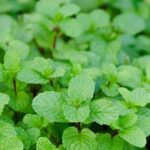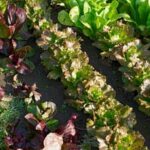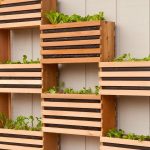Vegetable container gardening ideas have become increasingly popular among urban and suburban gardeners looking to grow their own produce in limited spaces. This gardening method allows individuals to cultivate a variety of vegetables in containers, whether they have a small balcony, patio, or even just a windowsill.
Container gardening offers numerous benefits, such as accessibility, flexibility, and the ability to control soil quality and drainage. It also provides an opportunity for those with physical limitations or limited outdoor space to still enjoy the rewards of growing their own fresh produce. In this article, we will explore the essentials of vegetable container gardening, from selecting the right containers to troubleshooting common issues that may arise.
Whether you are a beginner looking to start your first vegetable container garden or a seasoned gardener seeking new ideas and inspiration, this guide will provide you with valuable information on how to successfully grow a thriving container garden. From choosing the right containers and vegetables to maintaining proper soil quality and addressing common challenges, we will cover all you need to know to create your own bountiful mini-farm right at home.
Benefits of Vegetable Container Gardening
Increased Accessibility and Mobility
One of the primary benefits of vegetable container gardening is the increased accessibility and mobility it provides for gardeners. With container gardening, you can place your vegetable containers on patios, balconies, or even indoors, making it easier to tend to your plants without the need for a large garden space. This accessibility also allows individuals living in apartments or urban areas to enjoy growing their own fresh vegetables without a traditional garden plot.
Control Over Growing Conditions
Another advantage of vegetable container gardening is the level of control it offers over the growing conditions of your plants. By using containers, you can easily adjust factors such as soil quality, sunlight exposure, and temperature to suit the specific needs of each vegetable variety you are growing. This control can result in healthier plants and higher yields compared to traditional in-ground gardening.
Reduction in Pest and Disease Issues
Container gardening can also help reduce the occurrence of pest and disease issues that commonly affect vegetable plants grown in traditional gardens. By elevating your containers off the ground, you can minimize contact with soil-borne pests and pathogens. Additionally, containers allow for better air circulation around plants, reducing the risk of fungal diseases. This benefit results in less reliance on chemical pesticides and fungicides, promoting a more organic and sustainable approach to vegetable cultivation.
Choosing the Right Containers for Vegetable Gardening
Types of Containers
When it comes to vegetable container gardening ideas, the type of container you choose can significantly impact the growth of your plants. Some popular options include plastic pots, clay pots, wooden boxes, fabric bags, hanging baskets, and even repurposed items like buckets or old tires. Each type of container has different properties that affect factors such as water retention, temperature regulation, and root insulation.
Size and Depth Considerations
It’s essential to consider the size and depth of the containers when selecting them for your vegetable garden. Different vegetables have varying root depths, so choosing a container that is deep enough to accommodate their root systems is important for healthy growth. Additionally, larger containers provide more room for soil volume, which can help with moisture retention and stability for larger plants.
Drainage Needs
Proper drainage is vital in vegetable container gardening to prevent waterlogging and root rot. Make sure the containers you choose have adequate drainage holes at the bottom to allow excess water to escape. You can also elevate the containers slightly by placing them on pot feet or bricks to ensure proper drainage.
Additionally, consider using a layer of gravel or broken pottery pieces at the bottom of the container to enhance drainage further. By selecting containers with good drainage capabilities, you can create a healthier environment for your vegetables to thrive in their growing space.
Selecting the Best Vegetables for Container Gardening
When it comes to selecting the best vegetables for container gardening, there are a few factors to consider to ensure a successful harvest. One important consideration is the size of the container, as certain vegetables have different space requirements for their roots to grow properly. Vegetables like tomatoes, peppers, and cucumbers require larger containers with adequate depth for their root systems to thrive.
Another factor to keep in mind when selecting vegetables for container gardening is the amount of sunlight your outdoor space receives. Vegetables like spinach, lettuce, and kale can thrive in partially shaded areas, while tomatoes, peppers, and eggplants require full sun to produce abundant fruit. It’s essential to match the sunlight requirements of your chosen vegetables with the available lighting conditions in your outdoor space.
Additionally, some vegetables are better suited for container gardening due to their compact growth habits or adaptability to growing in confined spaces. Vegetables like radishes, carrots, and herbs are excellent choices for container gardening as they don’t require a lot of room to grow and can be easily harvested from smaller containers.
By selecting vegetables that are well-suited for container gardening based on these factors, you can set yourself up for a bountiful harvest of fresh produce right at your fingertips.
Overall, when choosing the best vegetables for container gardening, it’s essential to consider the size of the container, sunlight requirements, and growth habits of each plant. With careful planning and selection of vegetables that align with these considerations, you can create a thriving vegetable garden in containers that will provide you with an abundance of fresh produce throughout the growing season.
Experimenting with different vegetable varieties and combinations will not only add visual interest but also allow you to enjoy a diverse range of flavors from your own vegetable container garden.
Soil and Fertilizer Tips for Successful Container Gardening
When it comes to successful vegetable container gardening, one of the most crucial factors to consider is the soil and fertilization. The right combination of soil and nutrients can make a significant difference in the health and productivity of your vegetable plants. Here are some tips to ensure that your container garden thrives:
- Choose a high-quality potting mix specifically formulated for container gardening. Avoid using regular garden soil, as it can become compacted and hinder proper drainage.
- Opt for a mix that contains a good balance of organic matter, like compost or peat moss, to help retain moisture and provide essential nutrients to your plants.
- Consider adding perlite or vermiculite to improve drainage and aeration in the soil, which is crucial for healthy root development.
In addition to selecting the right potting mix, it’s essential to provide your vegetable plants with the necessary nutrients through fertilization. Container-grown vegetables often require more frequent feeding than those grown in traditional garden beds. Here are some fertilizer tips for successful vegetable container gardening:
- Choose a balanced, water-soluble fertilizer specifically designed for vegetables, such as a 10-10-10 NPK formula.
- Follow the instructions on the fertilizer package carefully, as over-fertilizing can lead to nutrient imbalances and damage to your plants.
- Consider using a slow-release fertilizer for a steady supply of nutrients throughout the growing season without the need for frequent applications.
By paying attention to your soil quality and providing proper nourishment through fertilization, you can set your vegetable container garden up for success. Remember that healthy soil is the foundation for healthy plants, so investing time in preparing the right growing medium will pay off with bountiful harvests of fresh and flavorful vegetables right at your fingertips.
Tips for Watering and Drainage in Vegetable Container Gardening
When it comes to vegetable container gardening, proper watering and drainage are crucial for the health and success of your plants. Without the right amount of water and proper drainage, your vegetables may suffer from issues such as root rot or nutrient deficiencies. Here are some tips to help you ensure your vegetable container garden thrives:
- Watering: One of the most important things to remember when watering your vegetable containers is to provide consistent moisture. Check the soil regularly by sticking your finger into it; if it feels dry about an inch below the surface, it’s time to water. Avoid overwatering, as this can lead to waterlogged soil and root rot. Water in the morning to allow excess moisture to evaporate during the day.
- Drainage: Good drainage is essential for healthy plants. Make sure your containers have adequate drainage holes at the bottom to prevent water from accumulating and drowning the roots. You can also elevate your containers slightly by placing them on pot feet or bricks to allow excess water to drain freely.
- Self-Watering Systems: Consider using self-watering containers or systems for easier maintenance and more consistent moisture levels. These systems typically have a reservoir at the bottom that allows plants to absorb water as needed, reducing the risk of both underwatering and overwatering.
By following these tips for watering and drainage in vegetable container gardening, you can create an environment where your plants can thrive and produce bountiful harvests. Remember that each plant may have specific watering needs, so pay attention to their individual requirements based on their species and growing conditions. With proper care, your vegetable container garden will reward you with fresh produce throughout the growing season.
Creative Design Ideas for Vegetable Container Gardens
Vegetable container gardening is not only a great way to grow your own fresh produce but also provides an opportunity to get creative with your garden design. One of the first things to consider when planning the design of your vegetable container garden is the space available.
Whether you have a small balcony, deck, or patio, there are endless possibilities for designing an attractive and productive container garden. Vertical gardening can be a space-saving option, utilizing hanging baskets, trellises, or vertical planters to maximize growing area.
When it comes to containers for vegetable gardening, think outside the box. While traditional terracotta pots are always a reliable choice, consider repurposing items such as metal buckets, wooden crates, or even old wheelbarrows for a unique and charming look. By mixing and matching different types of containers in various sizes and shapes, you can create visual interest in your vegetable garden while optimizing growing conditions for different plants.
In addition to the containers themselves, consider adding decorative elements like colorful plant markers, whimsical signs, or string lights to enhance the overall look of your vegetable container garden. You can also play with different heights by using plant stands or arranging containers on shelving units to create a dynamic and visually appealing display.
Incorporating these design ideas into your vegetable container garden will not only make it a functional space for growing vegetables but also a beautiful and inviting addition to your outdoor living area.
| Container | Advantages |
|---|---|
| Terracotta pots | Durable and provide good drainage |
| Metal buckets | Rustic aesthetic and versatile use |
| Wooden crates | Charming look and customizable size |
Maintenance and Care for Vegetables in Containers
Maintaining and caring for vegetables in containers is crucial to ensure a successful harvest. Regular maintenance not only keeps your plants healthy but also promotes optimal growth and development. One important aspect of maintenance is monitoring the condition of your plants regularly, checking for any signs of pests, diseases, or nutrient deficiencies. By addressing issues promptly, you can prevent them from escalating and affecting the overall health of your vegetables.
In addition to regular monitoring, proper care practices such as pruning, staking, and providing adequate support for climbing plants are essential for a thriving container garden. Pruning helps improve air circulation around the plant, reduces the risk of diseases, and encourages better fruit production. Staking or trellising certain vegetables like tomatoes, cucumbers, and beans prevents them from sprawling on the ground, saving space while promoting healthier growth.
When it comes to caring for vegetables in containers, feeding your plants with the right nutrients is key to their success. Using a balanced fertilizer specifically formulated for container gardening can help replenish essential nutrients that may become depleted over time. It’s important to follow the recommended application rates provided on the fertilizer package to avoid overfeeding or nutrient imbalances that could negatively impact plant health.
| Maintenance Tips | Care Practices |
|---|---|
| Regularly monitor plants for pests, diseases, and nutrient deficiencies | Prune plants for improved air circulation and fruit production |
| Provide support for climbing vegetables | Use balanced fertilizer for container gardening |
Troubleshooting Common Issues in Vegetable Container Gardening
In conclusion, vegetable container gardening is a versatile and convenient way to grow your own fresh produce, even in limited spaces. By following the tips and ideas outlined in this article, you can successfully cultivate a thriving container garden right at home. From choosing the right containers and vegetables to mastering soil composition, watering techniques, and creative design ideas, the possibilities are endless when it comes to vegetable container gardening.
One of the essential aspects of maintaining a healthy container garden is proper maintenance and care for your vegetables. Regularly checking for pests, diseases, and nutrient deficiencies can help prevent common issues that may arise in vegetable container gardening. Ensuring that your plants receive adequate sunlight, water, and nutrients is key to their overall health and productivity.
As you embark on your vegetable container gardening journey, don’t be discouraged by challenges that may arise along the way. Remember to stay attentive to your plants’ needs, stay informed about best practices in container gardening, and don’t hesitate to seek guidance from experienced gardeners or resources. With patience and dedication, you can enjoy a bountiful harvest of fresh vegetables from your very own vegetable container garden.
Frequently Asked Questions
What Vegetables Grow Well Together in a Container?
Some vegetables that grow well together in a container include tomatoes, basil, and onions. These plants have similar sunlight and watering needs, making them compatible companions in a limited space.
What Vegetables Are Good to Grow in Containers?
Vegetables that are good to grow in containers are those with shallow root systems or compact growth habits. Examples include lettuce, radishes, peppers, and kale. These vegetables thrive in the confined spaces of containers and can be easily grown on a balcony or patio.
How Many Vegetables Can I Grow in a 5 Gallon Container?
In a 5-gallon container, you can typically grow one tomato plant, two pepper plants, or several herbs like basil or parsley. It’s important to consider the size of the mature plants and their root systems when determining how many vegetables can be successfully grown in a single container.

If you’re looking to get into vegetable gardening, or are just looking for some tips on how to make your current garden better, then you’ve come to the right place! My name is Ethel and I have been gardening for years. In this blog, I’m going to share with you some of my best tips on how to create a successful vegetable garden.





